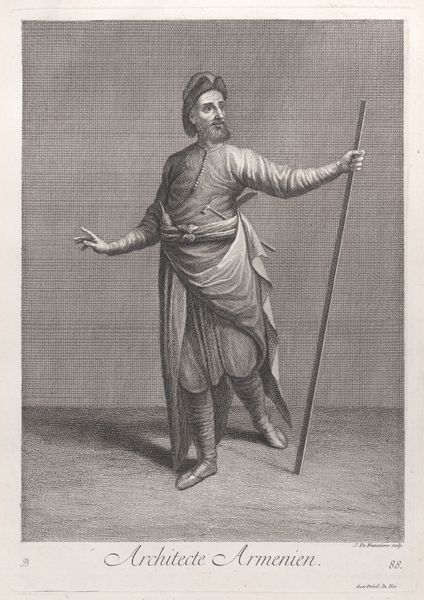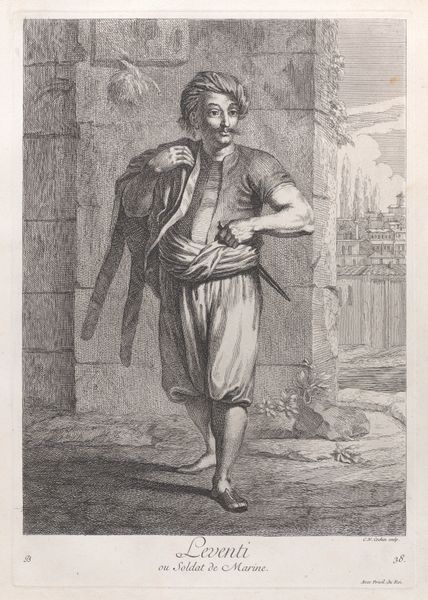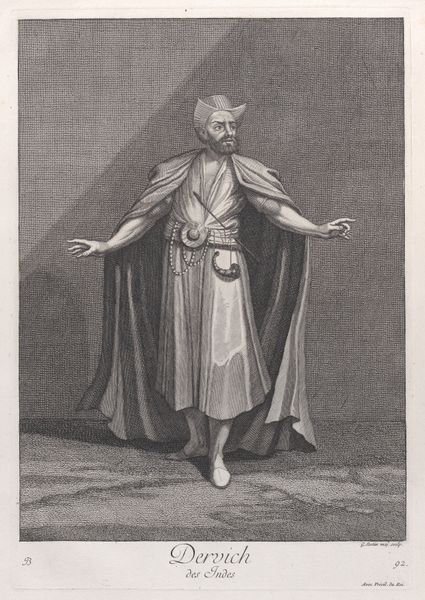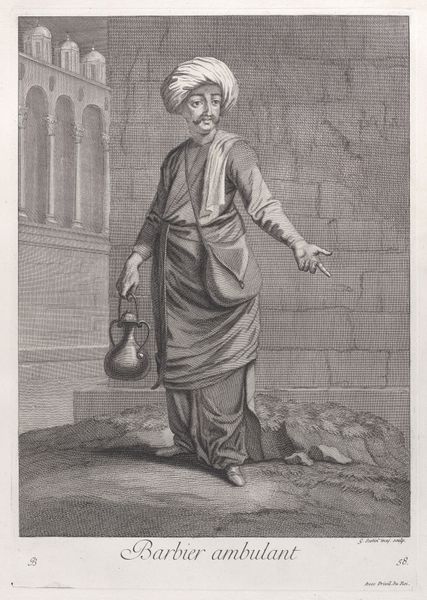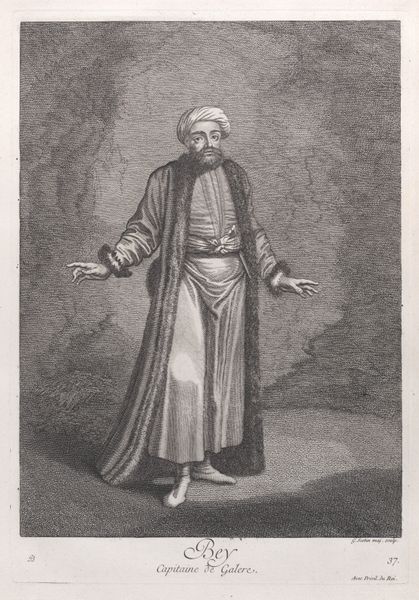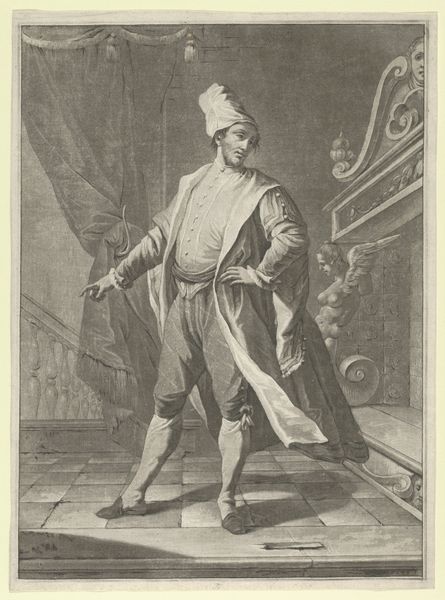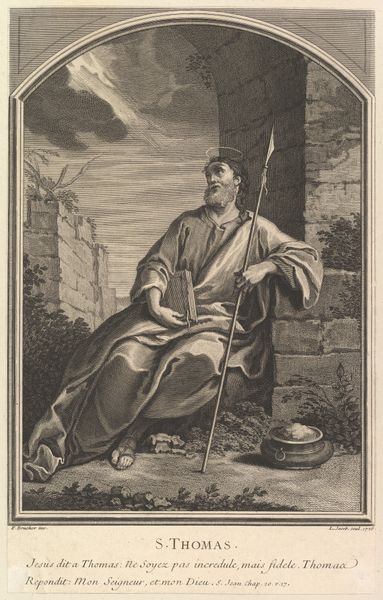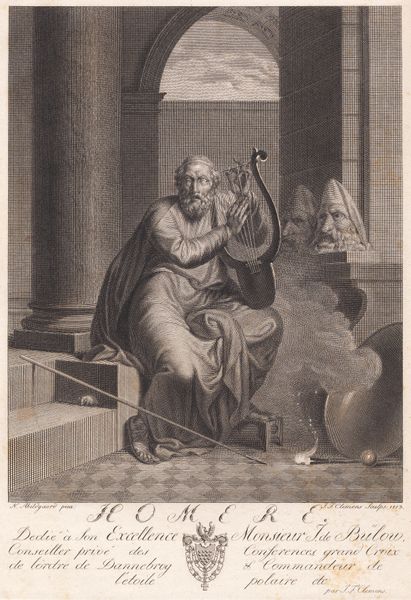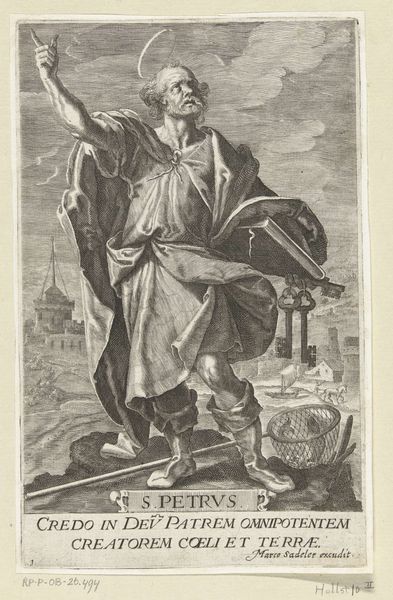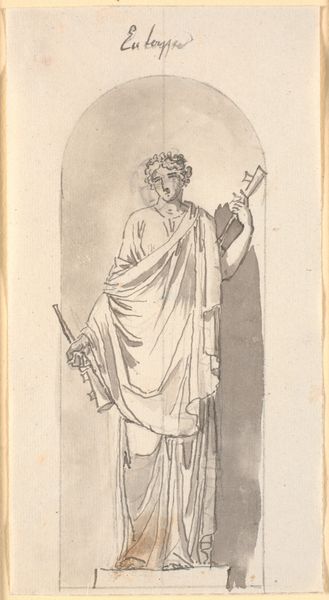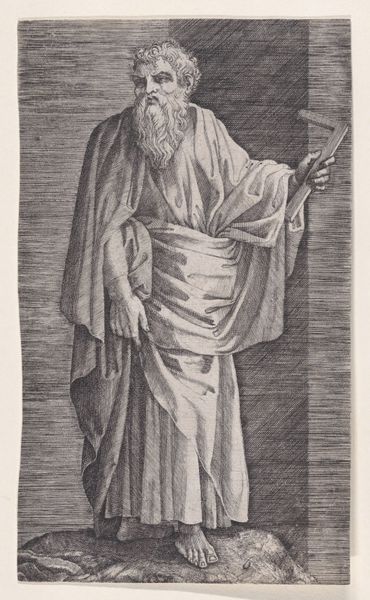
Ast-chi, Cuisinier du Grand Seigneur, plate 12 from "Recueil de cent estampes représentent differentes nations du Levant" 1714 - 1715
0:00
0:00
drawing, print, engraving
#
portrait
#
drawing
#
baroque
# print
#
orientalism
#
men
#
genre-painting
#
engraving
Dimensions: Sheet: 16 7/16 in. × 12 in. (41.8 × 30.5 cm) Plate: 14 1/16 × 9 3/4 in. (35.7 × 24.7 cm)
Copyright: Public Domain
Editor: So, this is “Ast-chi, Cuisinier du Grand Seigneur,” an engraving by Jean Baptiste Vanmour from around 1714-1715. It depicts a chef, seemingly in his kitchen. There’s almost a stillness to the scene, yet he appears ready for action. How do you interpret this work? Curator: This engraving is part of a larger collection documenting different nations of the Levant, and it is interesting to consider it as more than a simple depiction of a chef. We need to understand how it participates in the visual language of Orientalism that was prominent in Europe during this period. This lens raises questions about the power dynamics inherent in representing another culture. Consider how his clothing, the setting—all these details contribute to a constructed image of the "Orient" for a European audience. Does the artist present a genuine portrait, or does this image cater to existing stereotypes and assumptions? Editor: That's a really interesting point. I hadn’t considered the potential for constructed stereotypes. So, beyond the immediate representation, is there a deeper commentary at play? Curator: Precisely. Who has the authority to represent whom? We must analyze the gaze—who is looking at whom, and from what position of power? Think about the implications of circulating these images. They helped solidify a Eurocentric worldview. Can we even consider this an accurate depiction, or is it filtered through the lens of colonial perspective and biases? What kind of identity does this engraving assign to the "Grand Seigneur's" chef? Editor: So it becomes less about the individual and more about representing a broader, possibly flawed, understanding of an entire culture? I see how complex this is! Curator: Exactly. And that's why engaging with these historical images requires a critical eye, one that acknowledges the legacy of colonialism and the perpetuation of stereotypes. Editor: I hadn't approached it that way, but understanding the historical context makes it far more engaging and important. Curator: Absolutely. Art history, approached thoughtfully, helps us dissect power structures. I learned something new today as well. Thank you.
Comments
No comments
Be the first to comment and join the conversation on the ultimate creative platform.

